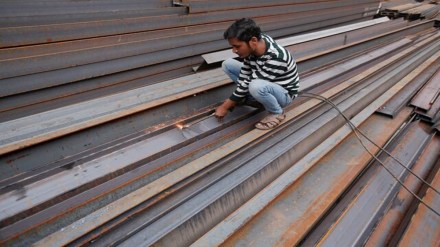India’s primary steelmakers may not take a material hit from any across-the-board hike in import tariffs on steel by the US, because the country is not a major export market for them, with less than 3% share in their total shipments. However, they see even greater influx of Chinese steel into India at lower prices, and have intensified their demand for a 25% safeguard duty on imports of the alloy.
Analysts are, however, also seeing the chances of the US import tariffs jacking up its domestic steel prices, and these eventually becoming sort of a benchmark for global prices. Elevated global prices can benefit India’s primary steel companies also, although for user industries and the larger economy, this could have adverse effects with the resultant high imported inflation.
In 2018, the first Trump government imposed a 25% tariff on steel imports from all countries barring Canada and Mexico. In retaliation to Trump’s tariff war in 2018, India imposed tariffs on 28 US products, including almonds, apples, and walnuts. However, in June 2023, ahead of Prime Minister Narendra Modi’s US visit, both countries agreed to terminate six outstanding disputes at the World Trade Organisation, which included duty rationalisation on steel and aluminium.
Former SAIL CMD Anil Chowdhary said, “President Trump may levy fresh tariffs on steel imports from India and elsewhere to safeguard the interest of the American steel industry. This would come at a difficult time when Indian steel companies face several domestic and international challenges, making India a net importer of steel in the year 2024.”
Ritabrata Ghosh, Vice President and Sector Head, ICRA, said: “Trump 2.0 is expected to bring fresh measures that could slow global trade due to rising protectionism. This is not a positive sign for global growth and, in turn, the health of the global steel industry. Against this backdrop, unless India puts in place trade barriers to protect its domestic steel industry, the Asian steel capacity surplus could chase a few of the remaining high-growth markets like India in the foreseeable future, keeping domestic prices under persistent pressure.”
To be sure, Trump has already ordered a review of the Section 232 steel tariff programmes announced in his first term. He has also threatened to use tariffs on steel imports from Canada and Mexico, the two nations contributing around 40% of total steel imports into the US.
Many, however, see Trump’s move is intended to pressure targeted countries into trade negotiations or agreements perceived to be more favourable and equitable for US interests. These could effectively push nations to the negotiating table, like last time.
Immediately after Trump’s inauguration as the 47th President, the American Iron and Steel Institute (AISI) urged the new administration to “take active steps to reinvigorate that programme to ensure it is meeting the objectives originally established by President Trump during his first term.” Following the 2018 tariff imposition, steel capacity expansions in the US were noticeable and the domestic industry reaped the benefits of higher prices and margins.
The AISI policy recommendations include enhancing existing trade measures to address foreign unfair trade practices, ensuring common-sense regulations that foster innovation and implementing tax policies to encourage new and continued investment.
Atanu Mukherjee, CEO, M N Dastur and Dastur Energy, said, “while no new steel tariffs have been announced for India, the Trump administration has signalled its intention to impose broad-based tariffs on global imports that could impact Indian steel exports to the US in the short term.
However, India’s robust and growing domestic demand for steel, driven by government-backed infrastructure investments and opportunities to explore alternative markets, suggests that any adverse effects may be temporary.”
Bigmint’s Founder and CEO Dhruv Goel said Trump’s proposed punitive tariffs on imports from China could disrupt indirect steel exports to the US, redirecting surplus steel to other markets. This would intensify challenges for global producers already struggling with rising Chinese exports. At the same time, Trump’s claim to quickly end the Russia-Ukraine war could accelerate NATO and EU-backed reconstruction efforts, driving massive steel demand. This would revive Europe’s underutilised steel mills, boost the region’s industry, and possibly positively impact India.
VR Sharma, Vice Chairman of Jindal Advisory Services, said, “There won’t be any impact (of likely US moves) on the Indian or European steel industries. India’s steel supply to the USA is minimal. The EU is also a net importer of steel. The US focus will be on natural gas production. Hence, they can attract investments in the steel sector. Their local steel industry underwent massive expansions during Trump’s last tenure. Banning steel imports will increase local steel prices within the USA. This will also help other countries to stabilise their steel prices.”
Exports of Indian steel to the US face an annual cap of 336,000 tonnes and 0-75% duties.
